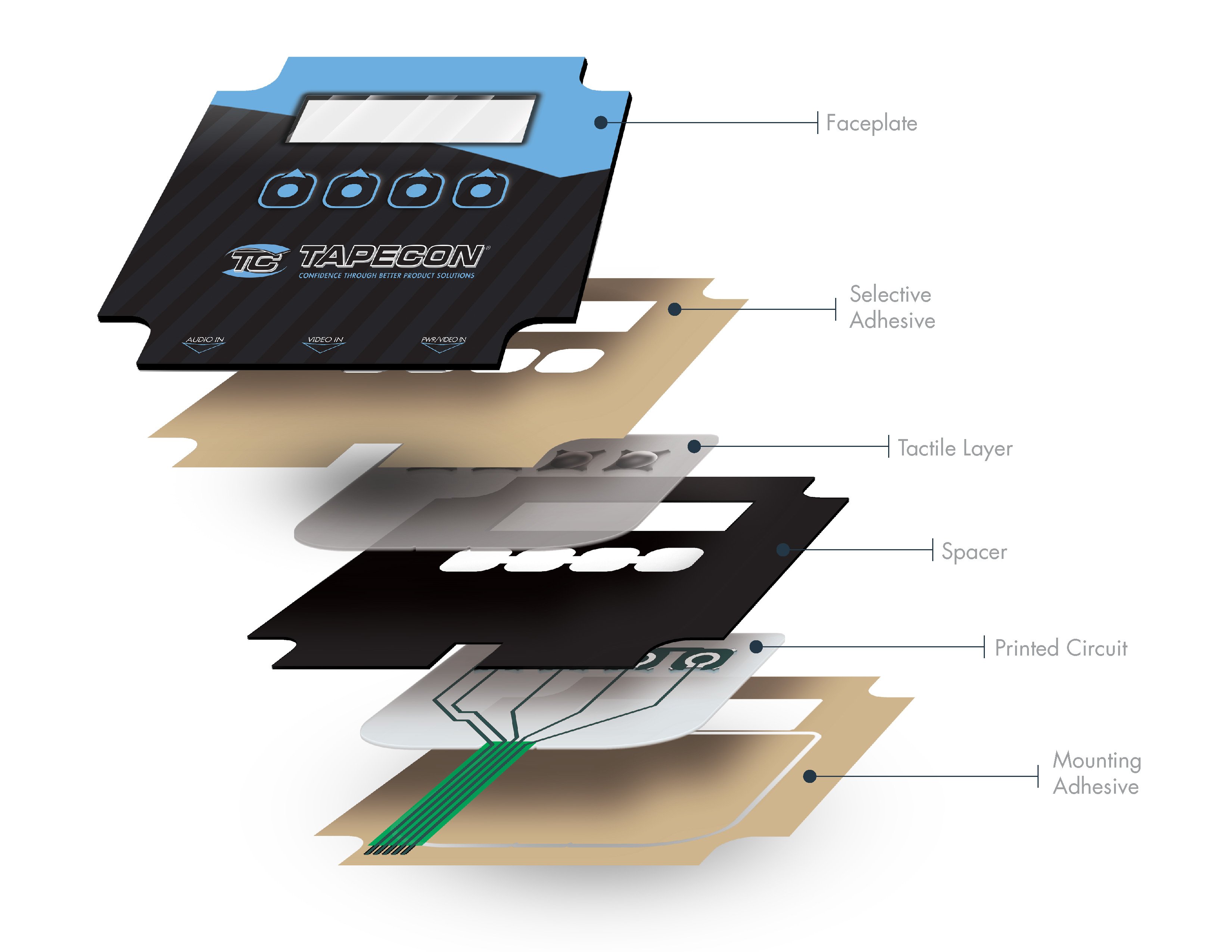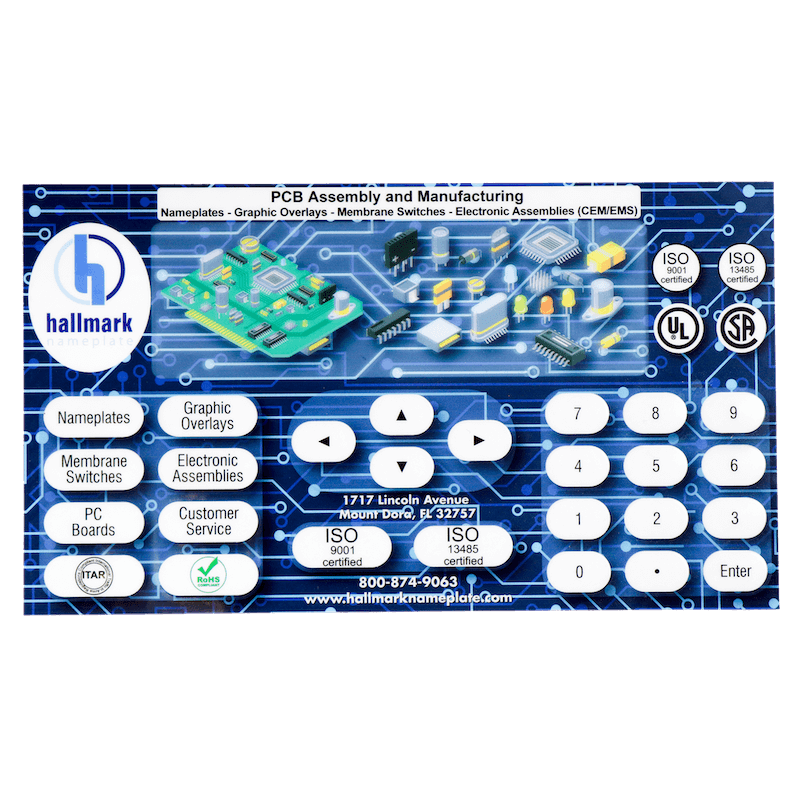How Membrane Switches Are Revolutionizing User Interface Design
How Membrane Switches Are Revolutionizing User Interface Design
Blog Article
Recognizing the Importance of Membrane Switches in Interface
Membrane switches are integral parts in the style of effective user interfaces, helping with not just capability yet also boosting visual charm and customer interaction. As we explore the future fads and numerous advantages linked with Membrane modern technology, it comes to be clear that these buttons are more than simply elements; they represent a convergence of technology and practicality.
What Are Membrane Buttons?

The spacer layer, which contains sticky homes, permits for the splitting up of the circuit layer from the overlay, making sure that the switch stays in a non-activated state till pushed. When pressure is used to the overlay, it presses the spacer layer, connecting the void and finishing the circuit in the underlying layer. This style not only reduces the physical space required for traditional mechanical switches but additionally enhances the toughness of the gadget, as Membrane buttons are normally immune to dirt, dampness, and other environmental variables.
Typically discovered in applications varying from customer electronic devices to clinical devices, Membrane buttons are indispensable to modern-day technology, offering a efficient and user-friendly interface that aligns with contemporary layout demands.
Benefits of Membrane Buttons
While many button modern technologies exist, Membrane Switches deal distinctive advantages that make them specifically desirable in different applications. Among the key benefits of Membrane buttons is their portable layout, which permits for space-saving implementations in tools where property is restricted. Their thin profile not just enhances visual allure but additionally facilitates light-weight construction.
Another significant advantage is their resistance to environmental aspects. Membrane buttons are usually secured against dampness, dirt, and contaminants, making them ideal for use sought after atmospheres, such as clinical devices and industrial equipment. This durability expands the life-span of the button, reducing maintenance prices and enhancing reliability.
Additionally, Membrane buttons can be tailored to satisfy particular design demands, including one-of-a-kind graphics and shades that enhance individual interaction. Their responsive feedback options can likewise be tailored to offer an enjoyable user experience. Additionally, Membrane switches are economical, specifically in high-volume applications, as they can be generated successfully.
Applications in Various Industries

In the consumer electronics market, Membrane switches prevail in devices such as microwaves, washing devices, and remote controls. Their tactile feedback and visual choices enhance user experience while giving a sleek, modern-day look. Furthermore, vehicle suppliers utilize Membrane switches in dashboard controls and infomercial systems, where space is restricted, and individual involvement is critical.
Additionally, the commercial market leverages Membrane buttons in control panels for equipment see page and equipment, enabling intuitive operation in frequently extreme environments. Their resistance to chemicals and dampness guarantees durability and integrity in these applications. On the whole, the versatility of Membrane Switches contributes dramatically to their widespread usage, making them important in various technological domain names.
Design Factors To Consider for Membrane Switches

When making Membrane switches, numerous essential factors to consider need to be considered to ensure optimal capability and individual experience. First of all, the option of products is important; choosing resilient, high-grade substrates can boost the switch's long life and resistance to environmental aspects such as moisture and temperature changes.
Second of all, the style of the visuals overlay need to prioritize clarity and simplicity of usage. Icons and text must be readable, and the layout needs to assist in instinctive interaction (membrane switches). Additionally, tactile feedback is necessary; incorporating a tactile dome or various other systems can improve the customer experience by offering physical verification of activation
One more essential factor is the switch's electrical performance. Developers should make certain that the conductive traces are properly made to reduce resistance and prevent signal disturbance. This involves evaluating the required actuation force and guaranteeing compatibility with the digital elements they will certainly interface with.

Future Fads in Membrane Modern Technology
As modern technology proceeds to breakthrough, Membrane switches are poised to evolve considerably, driven by advancements in products and producing techniques. One emerging fad is the incorporation of advanced products, such as flexible substrates and conductive inks, which boost toughness and lower the overall weight of Membrane buttons. These products not just boost the tactile reaction but likewise enable for the design of buttons that can stand up to harsher ecological problems.
In addition, the combination of touch-sensitive technologies is transforming traditional Membrane Switches into more interactive individual interfaces. Capacitive touch sensing units installed within Membrane switch panels can offer an extra instinctive and receptive individual experience, aligning with the growing need for sleek, modern designs in customer electronic devices.
In addition, improvements in printing strategies, such as digital and 3D printing, allow quick prototyping and modification of Membrane buttons. This adaptability allows producers to react a lot more rapidly to market needs and customer choices.
Last but not least, sustainability is coming look these up to be a significant emphasis, with makers checking out eco-friendly materials and processes. As these patterns unfold, the future of Membrane innovation guarantees improved functionality, visual charm, and ecological obligation, strengthening their function in sophisticated individual interfaces across numerous industries.
Verdict
In conclusion, Membrane Switches stand for a vital component in the style of user interfaces, combining functionality with visual versatility. As advancements in modern technology continue, the development of Membrane buttons is anticipated to additional refine customer interfaces, Check This Out driving advancement and enhancing functionality in a significantly complicated technological landscape.
Membrane buttons are indispensable elements in the style of efficient user interfaces, assisting in not only functionality but also enhancing aesthetic charm and individual interaction.Membrane Switches serve as a vital element in various individual interfaces, promoting a seamless interaction in between users and digital devices.While countless switch technologies exist, Membrane Switches deal distinctive benefits that make them specifically preferable in numerous applications.In addition, Membrane switches can be tailored to satisfy certain layout demands, integrating unique graphics and colors that improve user interaction.In conclusion, Membrane Switches represent a crucial part in the layout of user interfaces, integrating functionality with aesthetic adaptability.
Report this page